In this article I want to cover the steps of configuring Enterprise Vault for Exchange Server 2013 archiving. In fact I prepared a personal configuration guide and I want to share it. If you have any recommendation, it would be nice for me to update the guide. Anyway, let`s rock J
Firstly I want to explain my test environment.
- VMware Fusion as virtualization software
- One Domain Controller (Windows Server 2012 Datacenter)
- One Exchange Server 2013 installed on Windows Server 2012 Domain Controller
- One Certificate Authority installed on Domain Controller
- One SQL Server 2008 R2 (I will install Enterprise Vault on this Server)
- One Windows 7 Client with MS Office Pro Plus 2013 installed
- FQDN of Exchange Server and domain controller: exc13.aydogmusoglu.com
- FQDN of sql Server and enterprise vault: evsql.aydogmusoglu.com
Let`s configure the Server which we want to install Enterprise Vault 10.
At this stage I assume that;
- SQL Server is properly configured
- Vault Admin Account is properly created and configured with sufficient permissions
Log on to EV Server with Vault Admin Account. I will explicitly warn you when you need to log on to Exchange Server.
To improve Server performance, change the TEMP folder location.
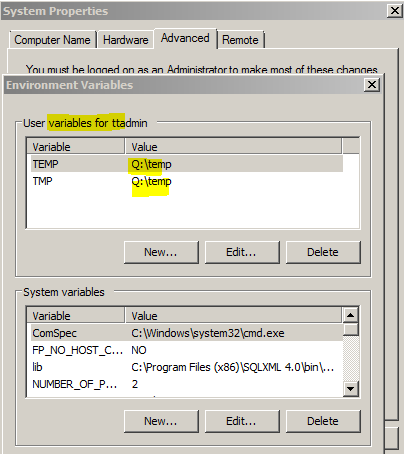
Resim-1
Q:\ drive is for TEMP,CACHE,MSMQ,INDEX and VSG locations for my test Server.
At production you should use several partitions for best practice.
To improve Server performance change default msmq path.
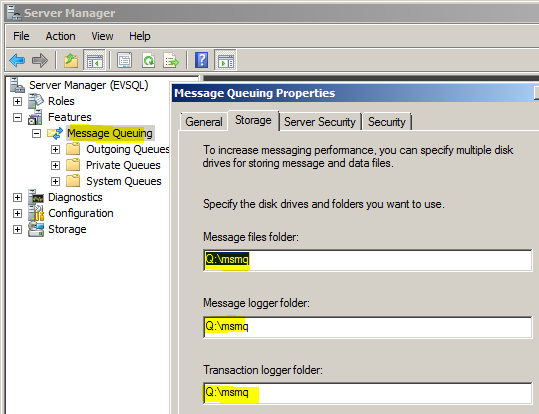
Resim-2
You should take MQ Offline before changing path. And be sure about sufficient NTFS permissions for new path (in this scenario the system {for example you can use everyone account } has to have sufficient ntfs permission on Q:\msmq folder)
Do not forget to take MQ online after path operation!
- Install .Net 3.5 SP1 feature
- Install IIS role
- Open IIS management console and obtain an SSL certificate. Bind it to Default Web Site
- Note: If you have a wild card ssl certificate you can use it
- Install MS Outlook 2007 , Install SP3 ,Install KB2596598
Log on to Exchange Server .There are two PowerShell scripts those are located on EV installation media. Copy them to Exchange Server and run these scripts in Exchange management shell. You can find the instructions about how to run these scripts in EV Installing and Configuring pdf document (this is also in EV media).
- SetEVExchangePermissions.ps1
- SetEVThrottlingPolicy.ps1
Log on to Exchange Server. Give “Send As” permission to Vault Admin Account on Vault System Mailbox. You can use either Exchange Admin Center or Exchange Management Shell
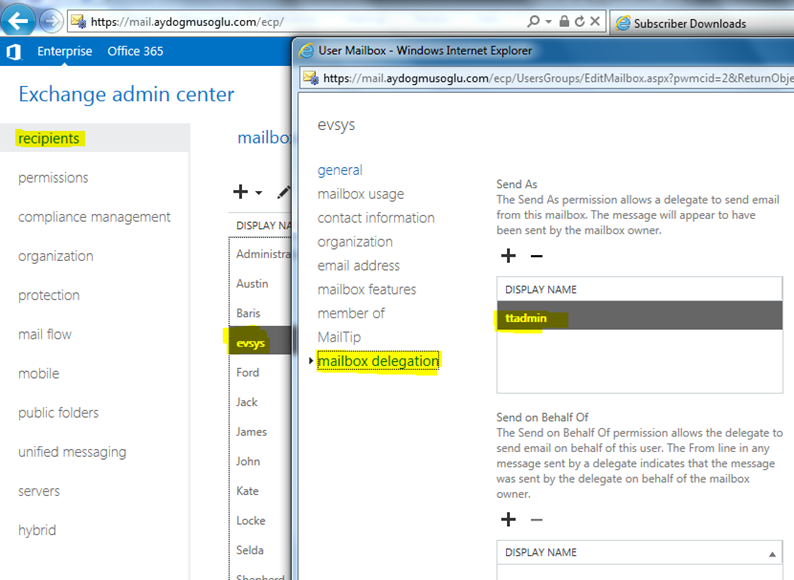
Resim-3
Add-adpermission –identity evsysmbx –user domain\vault_admin_account –accessright extendedright “send as”
Log on back to EV Server with Vault Admin Account.
Configure EV system mailbox MS Outlook profile.
Keep in mind à Exchange Server 2013 Outlook Anywhere configuration will probably be needed!!!
Be sure you can open EV system mailbox outlook profile with EV vault admin account.
Run Symantec EV setup.
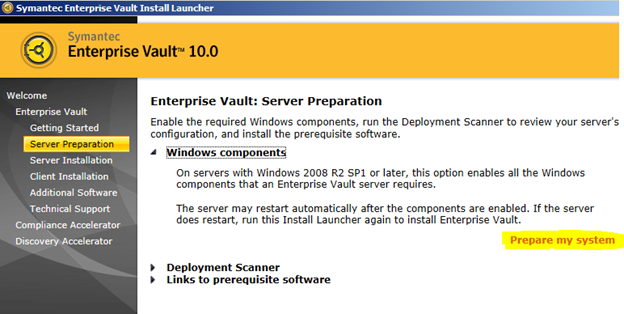
Resim-4
“Prepare my system” is very important. Because if you have a problem, you will be aware of it before it is too late.
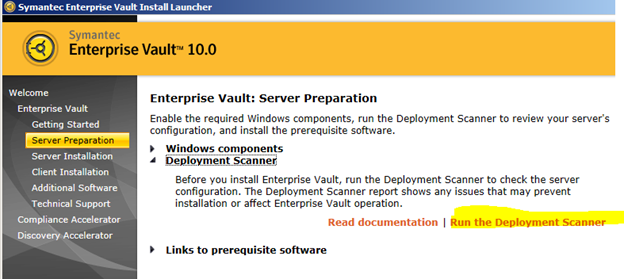
Resim-5
Deployment Scanner is very important too.
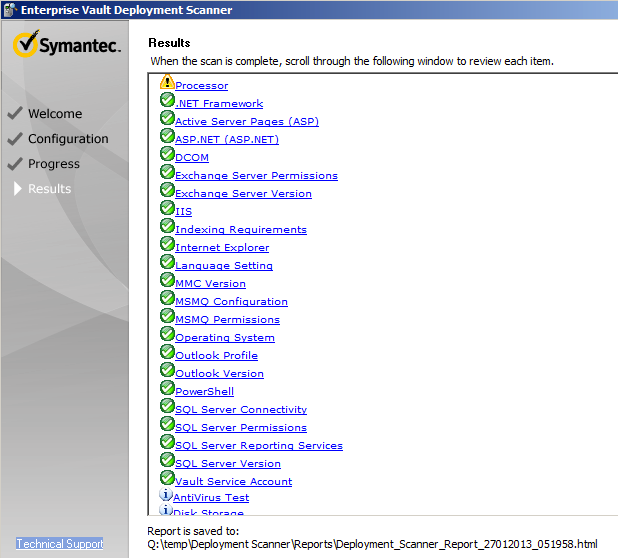
Resim-6
A proper example is as shown above
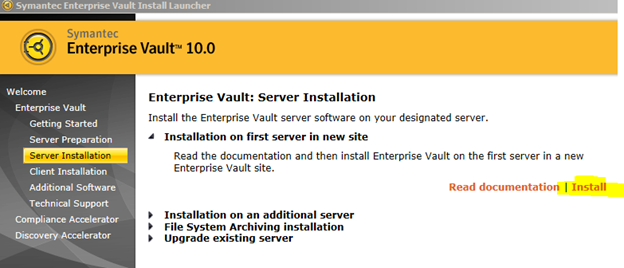
Resim-7
Hit the install.
After installation and reboot phases, log on to EV Server with Vault Admin Account again and go on.
You need to run Enterprise Vault Configuration wizard.
With this initial configuration you will have Directory DB, EV Alias, Monitoring DB, VAC configuration etc.
For mailbox (Enable, Disable, PST etc..) messages copy “C:\Program Files (x86)\Enterprise Vault\Languages\Mailbox Messages\en\EnableMailboxMessage.msg” to “C:\Program Files (x86)\Enterprise Vault” directory. Of course the language selection is up to you.
Open IIS management console.

Resim-8
Set the value as shown above.
OPTIONAL: If you have Exchange Server 2010 CAS role, install EV OWA 2010 add-in on CAS Server.
Create ExchangeServers.txt and write Exchange Server CAS IP address in it.
Run owauser.wsf script.
cscript owauser.wsf /domain:myDomain /user:evowausr /password:P5ssword
Restart Enterprise Vault Admin Service.
Open EV Admin Console.
Create Vault Store Group, Vault Store, Vault Store Partition.
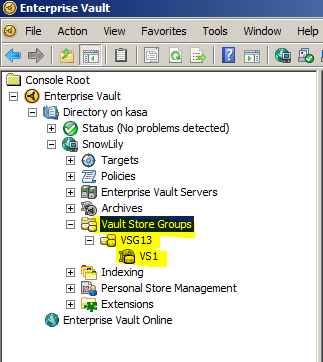
Resim-9
Add Domain and Exchange Server.
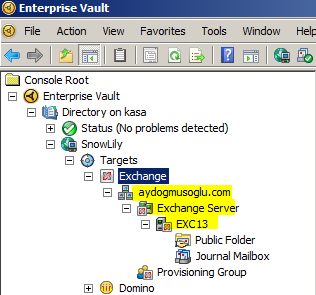
Resim-10
Configure Mailbox Policy and Desktop Policy.
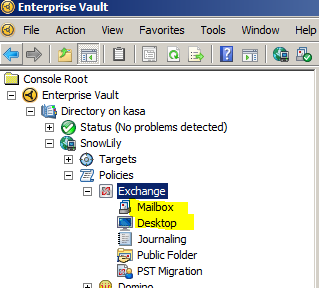
Resim-11
Configure Retention.
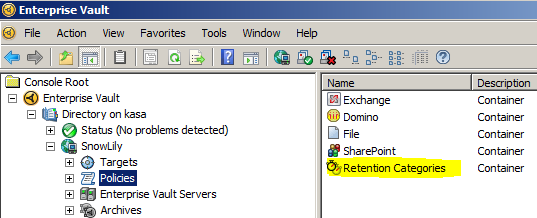
Resim-12
Set task properties according to your design or environment.
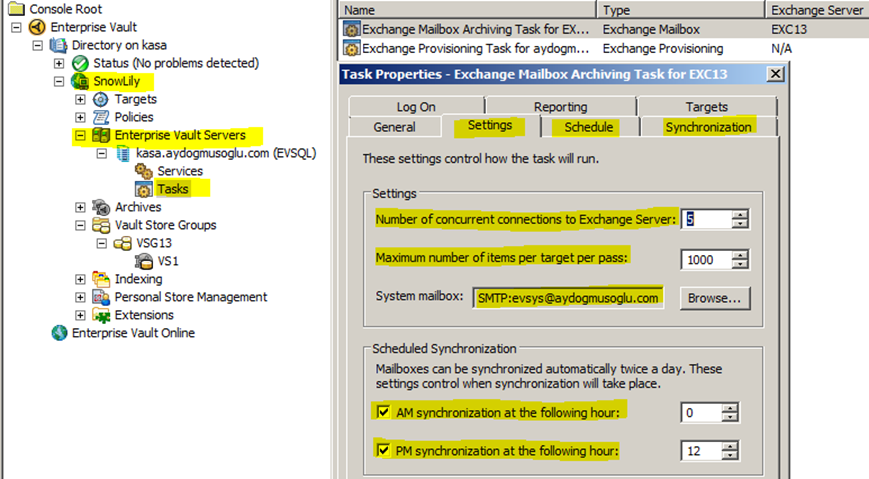
Resim-13
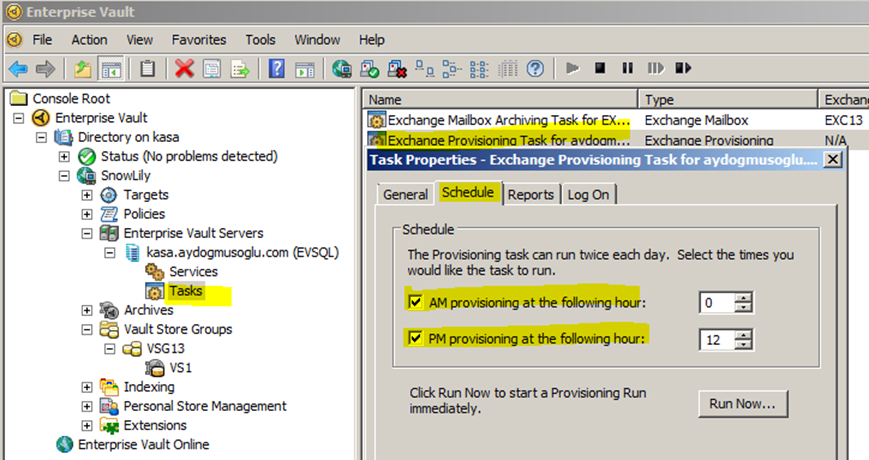
Resim-14
If you run the mailbox archiving task, EV functionality begins.
Now, time to open archived items. You need to do few more steps. You can configure some settings from Desktop Policy.
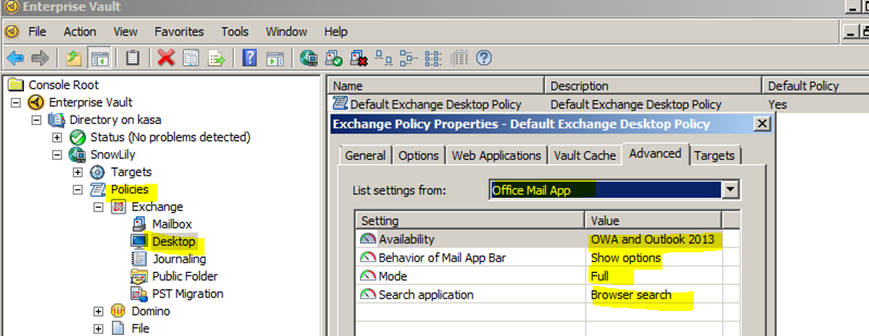
Resim-15

Resim-16
For Office 2013 and OWA 2013 users you need to deploy a mail application either to an individual or to whole organization.
$Mbx = get-mailbox “baris”
New-App -mailbox $Mbx.LegacyExchangeDN -Url (“http://evsql.aydogmusoglu.com/EnterpriseVault/OfficeMailAppManifest.aspx?LegacyMbxDn=” + $Mbx.LegacyExchangeDN)
You can use two lines above in one PS script obviously.
This script will deploy mail application to baris@aydogmusoglu.com.
For more information you can see Setting up Exchange Server archiving pdf document. (in installation media).
For Office 2013 users you can also install an add-in as you have already known from previous versions. (You can find the proper add-in from EV installation media).
For Office 2010 users you need to install an add-in. (You can find the proper add-in from EV installation media).
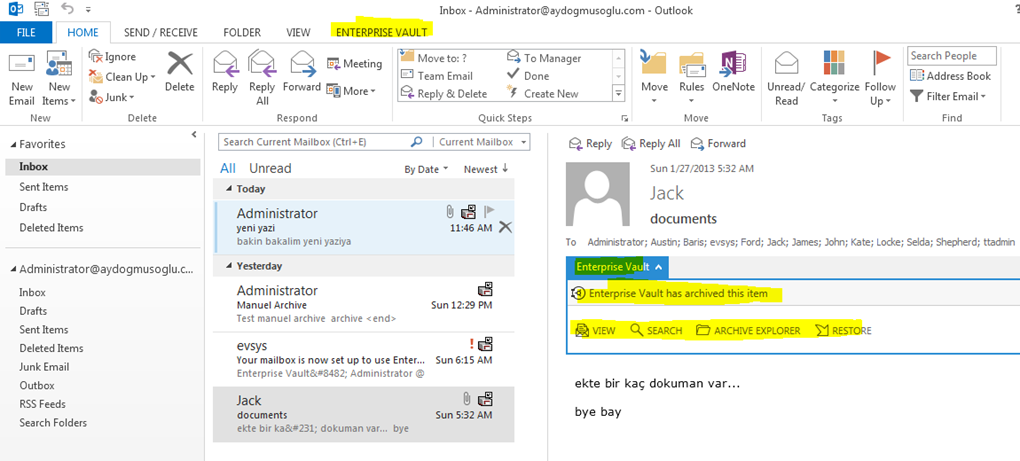
Resim-17
As you can see from above, EV add-in is deployed and EV Mail Application is deployed too. If you do not deploy mail application to a user, that user cannot see the Enterprise Vault Mail Application but that user can use Enterprise Vault add-in!!!
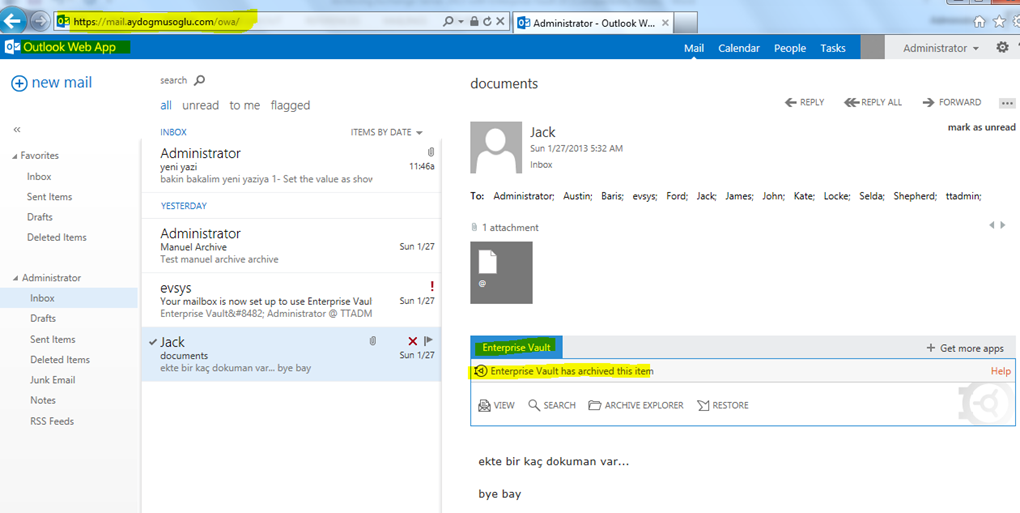
Resim-18
As a result if you have Office 2013 users and Internet Explorer 9 or newer users and only have Exchange Server 2013 organization, you need only EV Mail Application. No need to install add-in J
This is the end. I hope this is informative for you.
Bu konuyla ilgili sorularınızı alt kısımda bulunan yorumlar alanını kullanarak sorabilirsiniz.
Referanslar

